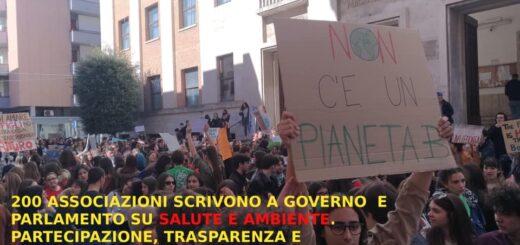n. 482: ‘Urgenda-Style’ Strategic Climate Change Litigation in Italy
Fonte: https://brill.com/view/journals/cjel/7/2/article-p245_7.xml
Abstract
This contribution addresses the first strategic climate change litigation filed against the Italian State, the Giudizio Universale case. Giudizio Universale’s legal architecture is largely akin to other landmark cases filed in Europe, such as Urgenda in The Netherlands and Klimaatzaak in Belgium. Accordingly, Giudizio Universale is grounded on the state’s breach of international and EU obligations, the encroachment of human rights enshrined in the European Convention on Human Rights and the Italian Constitution, and the consequent attribution of domestic tort liability to the state under the Italian Civil Code. This article thus examines the main arguments raised in Giudizio Universale in light of the underlying domestic human rights and tort liability regimes. It first investigates the interplay between the breach of climate change obligations and human rights infringement as presented in the complaint to understand whether, and to what extent, Italian courts could give deference to an ‘Urgenda-style’ claim. Second, it unpacks the existing interpretation of tort liability as applied to state liability vis-à-vis its citizens by Italian courts. Third, it factors Giudizio Universale in the recent Italian Constitutional reform, which explicitly introduced the protection of the environment, biodiversity and ecosystems, as well as a reference to the ‘interests of future generations’, into the fundamental principles of the Italian Constitution. Overall, the article concludes that several limitations exist in the Italian legal system in the pursuance of strategic climate litigation against the state for its (in)action against climate change. One of the merits of the Giudizio Universale case, however, is that it challenges these limitations to provide another suitable tool for ensuring protection against the climate emergency.
Keywords: climate change litigation; tort law; human rights law; strategic litigation; state liability; climate change; Giudizio Universale
1 Introduction1
Climate change has finally entered the doors of the Italian courts. On 5 June 2021, the social and environmental NGO A Sud, together with more than 200 other plaintiffs, filed a lawsuit with the Civil Court of Rome claiming that the Italian State is responsible for violating fundamental rights due to its insufficient action to reduce greenhouse gas (GHG) emissions and mitigate climate change.
A Sud et al v Italy,2 also known as Giudizio Universale (‘Latest Judgment’), is the first-ever strategic climate litigation case launched in Italy. As the title of this contribution suggests, Giudizio Universale essentially consists of two major legal grounds, similar to the ‘Urgenda-like’ setup adopted in several strategic climate litigation cases across Europe: human rights law and (domestic) tort law.3
On the one hand, the use of human rights arguments in climate litigation cases before domestic courts has increased dramatically since the Urgenda Foundation v The State of the Netherlands case in 2015.4 As such, human rights arguments have performed a gap-filling function where no specific law was providing adequate means to hold states accountable for their climate change obligations.5 On the other hand, it has been acknowledged that tort law plays a prominent role in shaping legal cultures through its application as law in action.6 Likewise, tort law can under certain circumstances prove effective in influencing behaviours by deploying a deterrent effect while pursuing both corrective and distributional justice.7 However, the role that domestic tort law can play in the determination of the scope of liability for a sovereign state in light of both its concrete inaction against global warming, and the characterization of such conduct as negligent in light of an asserted duty of care vis-à-vis its citizens, may vary widely across legal systems.8
This contribution sheds light on the Italian strategic climate litigation case to analyse the two central legal tenets noted above against the context of the Italian legal system. The Giudizio Universale case is ground-breaking insofar as its legal argumentation counters long-established paths of judicial interpretation in the Italian legal system. Thus, it places a relatively higher burden on the plaintiffs’ case as compared to other similar lawsuits brought, for example, in the Dutch Urgenda case and in the Belgian VZF Klimaatzaak v. Kingdom of Belgium case.9
While this article necessarily draws from Giudizio Universale as the first and landmark strategic climate litigation case in Italy, it aims nonetheless at providing a systematic theoretical framework to chart the legal background for climate litigation in the Italian jurisdiction (to be brought against both public authorities and private entities),10 also in comparison with other European legal systems.
Such analysis should moreover be factored into the recent and meaningful constitutional reform recently adopted in Italy. The reformed Italian Constitution now explicitly introduces the protection of the environment, biodiversity, and ecosystems, as well as a reference to the ‘interests of future generations’ into its fundamental principles. Such amendment recognizes the previously consolidated case law of the Italian Constitutional Court.
The article will pursue the above aim as follows. First, a short outline of the factual and legal backdrop of Giudizio Universale will be provided in Section 2 to frame the Giudizio Universale case comparatively with other strategic climate litigation cases. Section 3 analyses the two main legal elements of the case, namely the human rights and tort law legal basis, also according to Italian jurisprudence. This section also provides an additional perspective on the legal framework for strategic climate litigation in Italy in light of the recent substantial amendments to the Italian Constitution. Section 4 concludes by adding some critical remarks, drawing from the previous sections.
2 Giudizio Universale as ‘Urgenda-Like’ Climate Case: Background and Legal Setup
Giudizio Universale is an example of a ‘systemic mitigation case’ challenging the state’s overall climate change mitigation action.11 As such, Giudizio Universale does not aim to quash a specific legislative or administrative act. The case aims to establish the civil liability of the Italian State for its insufficient response to climate change and to obtain injunctive relief in the form of an order to further reduce GHG emissions by 2030. This is why the case was brought before an ordinary judge (the Civil Court of Rome) rather than an administrative tribunal. The lawsuit was filed on 5 June 2021 by more than 200 plaintiffs, including minors represented by their parents, and different civil society organizations, including the environmental association A Sud, the Italian National Meteorological Society (‘Società Italiana di Meteorologia’) and the Italian branch of the International Society of Doctors for the Environment (‘ISDE Medici per l’Ambiente’), against the Presidency of the Council of Ministers as representative of the Italian State.12
The writ of summons begins with an initial section outlining the ‘planetary climate emergency’ and reporting detailed information on fundamental climate science concepts such as the ‘carbon budget’ and the ‘global tipping points’.13 The factual part of the writ continues by focusing on: the vulnerability of the Italian territory, described as a climate change ‘hot spot’; the statements of several Italian State representatives acknowledging the climate emergency and its adverse effects on the Italian territory; and the insufficient mitigation action pursued by Italy.14
In particular, the lawsuit contends that the emissions reduction targets stemming from the Integrated National Energy and Climate Plan (‘Piano Nazionale Integrato per l’Energia e il Clima 2030 – PNIEC’) are dramatically insufficient.15 The measures included in the PNIEC would bring a reduction of 36% below 1990 levels by 2030. The plaintiffs, in contrast, argue that Italy would have to achieve 92% of emissions reduction below 1990 levels by 2030 in order to fulfil its national ‘fair share’ to climate change mitigation. Although there is no single definition, the term ‘fair share’ is understood as the share of emissions reduction that a state would have to reach in order to make a fair contribution to implementing the Paris Agreement, in line with equitable principles of international environmental law.16 The plaintiffs base their request for a 92% emissions reduction target on a scientific report annexed to the summons. The report was produced by Climate Analytics, a non-profit organization dealing with global climate science and policy.17 If the principles of equity and common but differentiated responsibility are not considered and only the global average emissions reduction target is applied, Italy would have to achieve a 63% reduction by 2030, which is still significantly higher than the target resulting from the PNIEC.18
As regards the applicable law, the summons19 sets out the ‘climatic obligation’ incumbent upon the Italian State as a ‘complex obligation’, based on different sources of law: the relevant international climate change law instruments, namely the United Nations Framework Convention on Climate Change (UNFCCC) and the Paris Agreement;20 primary and secondary EU law;21 and the jurisprudence of the highest Italian courts (‘Corte Costituzionale’ and ‘Corte di Cassazione’) recognizing the existence of climate change, its adverse effects on human health and individual rights and the collective interest in adopting adequate response measures.22
The summons emphasizes the integration of the climatic obligation with scientific evidence and methods.23 In particular, the plaintiffs underline the role of the ‘science reservation’ (‘riserva di scienza’), an academic formula summarizing the constitutional jurisprudence whereby scientific findings constrain the political discretion of the state as well as the free reasoning of the judge.24
In the plaintiffs’ view, Italy’s insufficient mitigation action entails a violation of human and fundamental rights.25 In this respect, the summons devotes special attention to the ‘right to a stable and safe climate’. This right would stem from the consideration that the climate emergency has the potential to undermine the fundamental core of all human rights and hinder the basis of human development. Faced with such a threat, everyone has the right to ‘non-regression’: the right to a stable and safe climate becomes the precondition that safeguards the enjoyment of all other rights, for both present and future generations. The right would be based on the Italian Constitution, in particular on Article 2, recognizing and protecting fundamental rights and Article 32 on the right to health – which has already been interpreted by Italian Courts also to encompass the right to a healthy environment26 – the 1966 International Covenants and the Convention on the Rights of the Child, as well as on other norms entailing the principle of ‘non-regression’, also deriving from EU Law, such as Article 191 of the Treaty of the Functioning of the European Union (TFEU) on environmental protection, and Articles 52 and 53 of the Charter of Fundamental Rights of the EU.
In line with Urgenda, the lawsuit points out the violation of the Italian State’s positive obligations under the European Convention on Human Rights (ECHR), in particular Article 2 on the right to life and Article 8 on the right to private and family life, as well as Article 14 on non-discrimination (in relation to the disproportionate impact that climate change has on children).
Procedural rights to information were also allegedly violated, as the state disregarded previous initiatives by some of the plaintiffs demanding public access to information on the stance of the Italian State in international climate negotiations and on the impact of new infrastructure built on the Italian territory.27
According to the plaintiffs, the inaction on climate change mitigation and the consequent violation of human rights integrate the extracontractual liability of the Italian State, primarily under Article 2043 of the Italian Civil Code (ICC).28 Article 2043 provides that when damage is caused, it must be redressed. In this case, the harm would be marked by the violation of fundamental rights. The provision, and the general principle of neminem laedere (‘no harm’) enshrined therein, is interpreted in light of the Constitution in such a way as to also require preventive action, embedded in the duty to address the situation of danger and the current threat. Subordinately, liability is derived from Article 2051 ICC concerning custodian liability,29 and from the ‘qualified social contact’, a category of civil liability developed out of Articles 1173 and 1218 ICC.30
The preventive nature of the claim translates into the request for non-monetary compensation, namely, an injunctive order (under Article 2058 ICC) consisting of reducing GHG emissions to 92% below 1990 levels by 2030, a target that incorporates Italy’s ‘fair share’, as explained in the Climate Analytics report.31
3 Between Human Rights and Tort Law in Italian Climate Change Litigation Cases
3.1 A Tale of Human Rights
In the plaintiffs’ view, the failure of the Italian State to reduce GHG emissions entails a violation of human and fundamental rights enshrined in both international instruments (mainly the ECHR) and the Italian Constitution.
First, following in the footsteps of Urgenda, the plaintiffs build their claims as a violation of human rights enshrined in the ECHR. The ruling of the Dutch Supreme Court in December 2019, which recognized that insufficient mitigation action entails a violation of the right to life (Article 2 ECHR) and the right to private and family life (Article 8 ECHR), prompted the plaintiffs to follow this strategy.32 However, compared to the Dutch legal system, the Italian legal system formally is less open to international law, and the ‘direct applicability’ of ECHR provisions by Italian courts, while certainly possible, is still controversial and not straightforward. In the Dutch legal system, international law provisions binding upon all individuals by virtue of their contents are directly applicable. Accordingly, in Urgenda, the Dutch Court of Appeal granted the ECHR a ‘direct effect’.33 Italy gave full and complete execution (‘piena ed intera esecuzione’) to the ECHR with Law 848 of 4 August 1955. The ECHR ought to be, therefore, directly justiciable by individuals before the national judges. Yet, Italian courts’ jurisprudence has not always been consistent with this approach, thus drawing criticism from specialized legal scholarship.34 This does not preclude Italian judges from following the Dutch Court’s progressive stance. Moreover, the long-awaited pronouncements of the European Court of Human Rights on the climate complaints that have reached its docket could further strengthen the role that the Convention will be given in the Giudizio Universale case.35 Should the European Court of Human Rights hold that insufficient mitigation action by an individual state can lead to a violation of the human rights protected by the ECHR, Italian courts might be led to follow this interpretation and use the ECHR as a crucial guide to review the legality of Italy’s conduct.
Apart from the ECHR, universal human rights law can also be used as an interpretative guide by the Italian courts. The Italian Corte di Cassazione has recently proved receptive to the decisions of the United Nations (UN) human rights treaty monitoring bodies, as it based a decision in an asylum case on the views adopted by the Human Rights Committee in Teitiota v New Zealand.36
Similarly, the Italian judges could refer to the recent views adopted in Daniel Billy et al v Australia (Torres Strait Islanders case), where for the first time the Human Rights Committee found human rights violations due to insufficient climate action by an individual state.37
A second ground for the plaintiffs’ claims rests on the fundamental rights protected by the Italian Constitution. Unlike other national legal systems where climate litigation cases have been brought, the Italian Constitution does not expressly enshrine the right to a healthy environment. However, this right stems from an extensive interpretation of the right to health (Article 32) in the light of Article 2.38 Article 2 is in fact considered to embody an ‘open catalogue’ of fundamental rights deserving protection under the Italian Constitution.39 The plaintiffs are attempting to go a step further by including in this catalogue the right to a stable and safe climate, which the Italian State allegedly violated due to its insufficient mitigation action. While recognizing such a right is not necessary for granting the plaintiffs’ claim, it arguably forms an original and vital part of the claim.
It is evident that the rights component of Giudizio Universale carries some controversial aspects. The first question is that of the ‘justiciability’ of the alleged violation of fundamental rights in the Italian legal system. Environmental protection is traditionally considered a ‘diffuse interest’, which is not justiciable by individual applicants on behalf of the entire population. In addition, legislative and executive organs enjoy a degree of discretion in determining the state’s climate policy. Furthermore, the Giudizio Universale complaint features a clear preventive intent and it does not detail specific human rights violations that have occurred so far. On the other hand, access to justice for the protection of environmental interests is undergoing significant development, including for NGOs, which figure among the plaintiffs of Giudizio Universale,40 and the ordinary judge is supposed to be in a position to scrutinize situations of peril that may lead to violations of fundamental rights.41
From a substantive point of view, the plaintiffs’ requests entail a difficult balancing test. The levels of GHG emission reductions that Italy would have to achieve by 2030 to fulfil its ‘fair share’ might have implications on the enjoyment of other fundamental rights, such as the right to work and economic freedom. In a recent and well-known ruling, the Italian Constitutional Court held that the right to work and the right to a healthy environment are fundamental rights and that the balancing must be done on a case-by-case basis according to the principles of proportionality and reasonableness.42 In this context, the plaintiffs argue that the right to a stable and safe climate is a prerequisite for the enjoyment of all other rights and that failing to act today would just lead to an aggravated outcome for future generations.
3.2 A Tale of Tort Law
According to the applicants, the long-standing inaction – or insufficient action – taken by the Italian State to reduce its GHG emissions in line with the best available climate science results in the violation of the general clause of non-contractual liability enshrined under Article 2043 ICC. Accordingly, ‘any malicious or negligent act that causes a wrongful injury to another obliges the person who has committed the act to pay damages’.43 Article 2043 ICC has been long interpreted as linking the notion of ‘wrongful injury’ to the violation of an absolute right of the victim, including property interests, life, health, etc.44 Therefore, in the applicants’ view, Article 2043 ICC should be applied to safeguard the fundamental rights threatened by climate change, including the absolute right to a healthy environment stemming from Articles 9 and 32 of the Italian Constitution.45 Furthermore, as stressed above, Article 2043 ICC would operate as a safeguard to all fundamental rights potentially violated as a consequence of climate change, most prominently the right to life and the right to private and family life under Articles 2 and 8 ECHR.
However, the existing case law of Italian Courts on the state’s non-contractual liability might pose hurdles toward a finding of liability for the Italian State under Article 2043 ICC with regard to its (in)action on climate change.
At least two major strands of interpretation can be identified with regard to state liability for legislative action (or inaction) in the Italian legal system. Such strands unfold with regard to the asserted State liability for failed implementation of EU law in light of the Francovich doctrine.46 A radical – yet not widely supported – strand utterly excludes liability of the state while exercising its legislative powers.47 This line of thinking departs from the assumption that the legislative function is an expression of political power, which is free in its purposes and exempt from any judicial review. Therefore, the exercise of political power in the Italian legal system does not provide the right to individuals to seek the proper exercise of legislative powers and, in any case, excludes the qualification of such rights in terms of tort liability pursuant to Article 2043 ICC.
According to another, yet more consolidated line of thinking, the (mis)exercise of legislative powers by the Italian State may fall under the scope of Article 2043 ICC.48 This argument draws from the assumption that Article 2043 ICC constitutes a general, open clause capable of encompassing all conduct potentially violating the neminem laedere standard. Moreover, such liability could only be non-contractual, since no legal bond of a contractual nature binds the state and citizens who, therefore, would be third parties with respect to the former.49
The most recent Italian case law since a key decision of the Supreme Court’s Grand Chamber in 2009 has however ruled out the non-contractual nature of the State’s liability for its legislative (in)action, nonetheless establishing a legal obligation for the Italian State to provide the means necessary to guarantee the protection objectives set by EU law.50 Yet importantly, this approach builds on the existing obligations of results upon the Italian State towards the EU.51 Such stances by Italian courts could play out favourably, especially with regard to the new set of clear-cut obligations set out under the EU legal regime, and most notably under the EU Governance Regulation (no. 2018/1999/EU), EU Climate Law (no. 2021/1119/EU), and EU Effort Sharing Regulation (no. 2018/842/EU).
Furthermore, a recent Supreme Court’s decision rejected the liability of the Italian State for its legislative (in)action, albeit not with regard to the incorrect or omitted implementation of EU law, but to the violation of the Italian Constitution.52 According to the Italian Supreme Court, lacking the EU legal order as a reference parameter to appraise the state’s liability for its legislative (in)action, any element to qualify the conduct of the State as unlawful under Article 2043 ICC was missing.53 This argument, coupled with the freedom of the political and legislative function crystallized in Articles 68(1) and 122(4) of the Constitution, implied the absence of any injustice that could bring the damage suffered by the plaintiff within the scope of tort law.54
3.3 A New Tale? Climate Litigation and the Recent Italian Constitutional Reform
The above assumptions related to the actual justiciability of the Italian State’s actions with regard to climate change could, however, acquire a different outcome in light of the recent amendments introduced to the Italian Constitution. The new text of Article 9(3) of the Italian Constitution as amended reads: ‘The State protects the environment, biodiversity and ecosystems, also in the interest of future generations’.
As we have noted elsewhere, the new legal setup provided by the amended Article 9 of the Constitution could further corroborate the existing recognition of the right to a healthy environment as a subjective right, potentially enforceable before a court of law also in light of any misconduct by the legislative power.55 In this respect, the explicit reference to the protection of the interests of future generations might open the door to a more creative and far-reaching judgment akin to the landmark German Bundesverfassungsgericht decision in the Neubauer case.56
As stressed by the plaintiffs of Giudizio Universale, the express recognition of the State’s duty to protect the environment and biodiversity as well as to take into due account future generations under Article 9 of the Italian Constitution could provide ‘a relevant legal reference for all the cases aimed at the protection of the environment and human rights linked thereto’.57 According to Italian Administrative and Civil Courts’ jurisprudence, the limit to the judicial review of a State’s legislative conduct shall be found in the final objective pursued by the relevant exercise of power at hand. If such power is exercised to pursue and achieve a clearly determined objective of public policy, no unlawful interference by the judiciary should be found, in order to ensure adequate protection of citizens pursuant to Article 24 of the Constitution. Hence the express recognition of environmental and biodiversity protection as a key objective of the State under the Constitution could help overcome the narrow interpretation of the separation of powers doctrine commonly embraced by Italian Courts insofar as it directly links programmatic objectives of the State to its actual pursuance through legislative action.
4 Conclusions
This article has engaged with two major elements of the first Italian strategic climate case, Giudizio Universale, to both provide some further background and point toward some potential trajectories based on the existing legal framework surrounding the case in the Italian legal system.
Well aware of the growing international acknowledgement of the climate change impact on the enjoyment of human rights and the rise of rights-based climate litigation worldwide, the plaintiffs based their claims on the ECHR and the fundamental rights protected by the national Constitution. The lawsuit distinguishes itself for its detailed account of the ‘right to a stable and safe climate’ that is threatened by the Italian State’s inadequate mitigation action. A right to a stable and safe climate is not recognized explicitly in the Italian legal system. Yet, the same Italian legal system is receptive to the recognition of new fundamental rights by virtue of the ‘open catalogue’ enshrined in Article 2 of the Constitution. The prompting of some general statements on this right would constitute a significant ‘added value’ of the case. Whether this or other rights have been violated by the State’s inaction is then for the judge to assess, following an accurate balancing test, and bearing in mind that a stable and safe climate is a precondition for the enjoyment of all other fundamental rights, especially in an intergenerational context.
From a tort law perspective, the Giudizio Universale case essentially reflects the consolidated approach adopted in other strategic climate litigation cases in Europe, such as those brought in the Netherlands and Belgium. Further limitations can be found, however, which are peculiar to the Italian context and speak to a rather narrow understanding of the separation of powers doctrine. In this respect, the legal setting of Giudizio Universale differs widely from that underlying the Urgenda case in the Netherlands, on which Article 3:305 of the Dutch Civil Code has been long relied upon for public interest litigation.58 The approach followed by Italian Courts looks foremost at the purposes for which the legislative power to be reviewed is geared. If such power is void of predetermined purposes, either expressly or inferable from the system, no judicial review shall be carried out to avoid the judiciary’s encroachment into the legislative realm. Where the power to be controlled is aimed at achieving overarching purposes that have already been set in the Constitution or the legal framework, the risk of undue interference by the judiciary in the legislative powers is excluded. Accordingly, judicial protection should always be afforded to citizens, either in the form of injunction or liability claims under Article 2043 ICC. This, however, essentially limits the justiciability of legislative (in)action of the State to the cases challenging acts or omissions that are specific enough to eschew the particular sphere reserved to the State’s legislative power. This approach has been severely criticized by Italian legal scholarship, yet without prompting any major shift in the Italian case law.59 Such resistance against the unfolding climate emergency and the need to ensure prompt and adequate protection to Italian citizens is, however, highly questionable, and will be a core point of discussion in Giudizio Universale. Hence the key quarrel in Italy would be not what tort law can do about climate change, but what climate change can do about tort law, in order to provide a suitable tool to address this century’s most pressing challenge.60
Although the article is the result of a joint research effort, Matteo Fermeglia was the lead author of Sections 1, 3.2, 3.3; while Riccardo Luporini was the lead author of Sections 2 and 3.1. The Conclusions are by both authors.
A Sud et al v Italy, Civil Court of Rome, writ of summons, filed on 5 June 2021, <http://climatecasechart.com/non-us-case/a-sud-et-al-v-italy/> (an automated English translation is available).
See Lucy MAXWELL, Sarah MEAD, Dennis VAN BERKEL, Standards for adjudicating the next generation of Urgenda-style climate cases, (2022) 13:1 Journal of Human Rights and the Environment 35, 41 (noting that ‘[C]laims based on tort law, meanwhile, usually rely on an existing duty of public authorities to exercise reasonable care (or similar formulations) to prevent or mitigate a foreseeable risk of serious harm to life or to bodily integrity, property or other protected interest(s), such as the environment, depending on the jurisdiction’).
Urgenda Foundation v The State of the Netherlands (2015) District Court ECLI:NL:RBDHA:2015: 7196. By no surprise, the literature dealing with the use of human rights arguments in climate litigation is burgeoning. See, among others: Annalisa SAVARESI and Joana SETZER, Rights-Based Litigation in the Climate Emergency: Mapping the Landscape and New Knowledge Frontiers, (2022) 13:7 Journal of Human Rights and the Environment, 7–34.
See Annalisa SAVARESI and Juan AUZ, Climate Change Litigation and Human Rights: Pushing the Boundaries, (2019) 9:3 Climate Law, 244, 262. More recently, César RODRIGUEZ-GARAVITO, Litigating the Climate Emergency: The Global Rise of Human Rights-Based Litigation for Climate Action, in César RODRIGUEZ-GARAVITO (ed.), Litigating the Climate Emergency: How Human Rights, Courts, and Legal Mobilisation Can Bolster Climate Action, Cambridge: CUP, 2022, 9–83.
See Mauro BUSSANI and Marta INFANTINO, Tort law and legal cultures, (2015) 63:1 American Journal of Comparative Law 77, 108.
See Nils JANSEN and S STEEL, The Effect of Tort Liability upon Behavior, in Nils JANSEN and Sandy STEEL, The Structure of Tort Law, Oxford, OUP, 2021, 111–181.
For a general overview of the major issues involved in the application of tort law to the climate change regime see Monika HINTEREGGER, Civil Liability and the Challenges of Climate Change: A Functional Analysis, (2017) 2 Journal of European Tort Law 238, 259.
VZW Klimaatzaak v Kingdom of Belgium & Others (2021) Court of First Instance of Brussels, No. 2015/4585/A.
On 9 May 2023, Greenpeace Italy and ReCommon, together with 12 Italian citizens, filed a lawsuit with the Civil Court of Rome against the oil and gas company ENI S.p.A. and its two main shareholders (Italian Ministry of Economy and Finance and Cassa Depositi e Prestiti) regarding liability for their contribution to climate change. The writ of summons is available in English at <https://climatecasechart.com/non-us-case/greenpeace-italy-et-al-v-eni-spa-the-italian-ministry-of-economy-and-finance-and-cassa-depositi-e-prestiti-spa/>.
Lucy MAXWELL, Sarah MEAD, Dennis VAN BERKEL (n 3), 36 define ‘systemic mitigation cases’ as cases that ‘challenge the overall effort of a state or its organs to mitigate dangerous climate change, as measured by the pace and extent of its greenhouse gas (GHG) emissions reduction’.
The writ of summons, together with other material promoting the legal initiative, is made publicly available on the website of the Giudizio Universale campaign: <https://giudiziouniversale.eu>.
A Sud et al v Italy (n 2) paras I.1–II.26.
ibid, paras III.1–III.19.
Ministry of Economic Development, Ministry of the Environment and Protection of Natural Resources and the Sea, Ministry of Infrastructure and Transport, Integrated National Energy and Climate Plan, December 2019 (English version) <https://energy.ec.europa.eu/system/files/2020-02/it_final_necp_main_en_0.pdf>.
See Climate Action Tracker, Methodology: Fair share, and Lavanja RAJAMANI, et al, ‘National ‘fair shares’ in reducing greenhouse gas emissions within the principled framework of international environmental law’, Climate Policy, 21:8, 983–1004, (2021) DOI: 10.1080/14693062.2021.1970504.
The report has been annexed to the writ of summons. The 92% emissions reduction target by 2030 aligns with the goal of limiting the global average temperature increase to 1.5° C; see Climate Analytics, Italy’s Climate Targets and Policies in Relation to the Paris Agreement and Global Equity Considerations, March 2021, Annex to the Writ of summons (English version) <https://giudiziouniversale.eu/wp-content/uploads/2021/06/Executive-summary-Climate-Targets-and-Policies-Report_Italy.pdf>
ibid 36. In an addendum to the report, Climate Analytics applies the same ‘fair share’ methodology to the emissions reduction trajectory of the European Union (EU) as a whole. The 55% reduction target by 2030 foreseen in the current EU Nationally Determined Contribution (NDC) is also evaluated as insufficient: Climate Analytics, Addendum to the Report on Italy’s Climate Targets and Policies in Relation to the Paris Agreement and Global Equity Considerations, March 2022, <https://drive.google.com/file/d/1dV56MlHKRrMKldFY0eTj4wuy1GO-3iFs/view>.
A Sud et al v Italy (n 2) paras IV.1.a–27.
Italy ratified the UNFCCC on 15 April 1994 and the Paris Agreement on 11 November 2016.
These include: Regulation (EU) 2018/1999 on the Governance of the Energy Union and Climate Action; Regulation (EU) 2018/842 on ‘Efforts Sharing’; Regulation (EU) 2019/2088 and 2020/852 on Sustainable Investment; and Regulation (EU) 2021/241 on the Recovery and Resilience Facility. The European Climate Law (Regulation 2021/1119/EU) was adopted on 30 June 2021, after the writ of summons had already been filed with the Court.
Among others, Court of Cassation (‘Corte di Cassazione’, ‘Cass.’) judgment no. 5022/2021, Council of State (‘Consiglio di Stato’), judgment no. 9/2019, Constitutional Court (‘Corte Costituzionale’, ‘Cost.’) judgment no. 124/2010, Cost. judgment no. 286/2019, Cost., judgment no. 237/2020, Cost., judgment no. 46/2021.
On the role of science in climate litigation, see Quirin SCHIERMEIER, ‘The science that supports climate lawsuits’, (2021) Nature 597, 169, I KAMINSKI, How scientists are helping sue over climate change, (2022) The Lancet 6, 386, Alina HOLZHAUSEN and Riccardo LUPORINI (eds), ‘The Role of Science in Climate Change Litigation: International Workshop Report’, (July 2021) <https://www.biicl.org/documents/143_the_role_of_science_in_climate_change_litigation_-_workshop_report.pdf> and the initiatives by the Science Hub for Climate Litigation of the Union of Concerned Scientists, <https://www.ucsusa.org/resources/science-hub-climate-litigation#toc-science-and-climate-litigation>.
A Sud et al v Italy, (n 2) paras IV. 16–21.
ibid paras V. 1–26.
Cass., judgment no. 2207/1978, Cass., judgment no. 1463/1979, 5172/1979, Cost., judgment no. 210/1987 and Cost., judgment no. 641/1987.
A Sud et al v Italy, (n 2), paras V.22–26.
ibid paras VI.1–12.
Where the climate system would feature as the ‘thing’ in custody, and the state as the ‘custodian’. ibid, paras VI.13–18.
ibid paras VI.19–28.
ibid 96–98.
The State of the Netherlands v Stichting Urgenda (2019) ECLI:NL:HR: 2019:2007, English version. For a comment: André NOLLKAEMPER and Laura BURGERS, ‘A New Classic in Climate Change Litigation: The Dutch Supreme Court Decision in the Urgenda Case’ (2020) EJIL: Talk! <https://www.ejiltalk.org/a-new-classic-in-climate-change-litigation-the-dutch-supreme-court-decision-in-the-urgenda-case/>.
See, in particular, The State of the Netherlands v Stichting Urgenda, Procurator General of the Supreme Court of the Netherlands, Conclusion (2019) ECLI:NL:PHR:2019:1026 paras 2.26–2.30.
Cass., judgment no. 18923/2021, and Pasquale DE SENA, et al, ‘Dichiarazione congiunta degli studiosi di diritto internazionale e di diritto costituzionale sulla diretta applicabilità dei trattati internazionali nell’ordinamento italiano’, (2022) 1 Diritti umani e Diritto Internazionale 16, 103.
At least 12 individual complaints concerning climate change have been filed with the ECtHR, and the jurisdiction over three of them has been relinquished to the Grand Chamber, which is supposed to deliver a judgment in 2024. See: ECtHR, Duarte Agostinho et al v Portugal et al, App No 39371/20 (relinquished in favour of the Grand Chamber 29 June 2022); Verein KlimaSeniorinnen Schweiz et al v Switzerland, App No 53600/20 (relinquished in favour of the Grand Chamber 26 April 2022); Carême v France App No 7189/2 (relinquished in favour of the Grand Chamber 31 May 2022).
See Cass., judgment no. 5022/2021, where the Court held that the assessment that the trial judge carries out for the purpose of granting humanitarian protection should consider not only armed conflict scenarios but also situations of social, environmental or climate degradation. See also Teitiota v New Zealand, ‘Views Adopted by the Human Rights Committee under Article 5 (4) of the Optional Protocol, Concerning Communication No. 3624/2019’, UN Doc CCPR/C/127/D/2728/2016 (7 January 2020). The case concerned New Zealand’s denial of refugee status to a Kiribati citizen and the alleged violation of his right to life.
Daniel Billy et al v Australia, ‘Views Adopted by the Human Rights Committee under Article 5 (4) of the Optional Protocol, Concerning Communication No. 3624/2019’, UN Doc CCPR/C/135/D/3624/2019 (22 September 2022). The Human Rights Committee found that Australia violated the rights of a group of Torres Strait Islanders to privacy, family and home and to culture due to its failure to implement ‘timely adequate’ climate change adaptation measures in the Islands.
See judgments n 26 above.
Cost., judgment no. 223/1996, Cost., judgment no. 561/1987, Cost., judgment no. 13/1994. Augusto BARBERA, ‘Articolo 2 della Costituzione’, in Giuseppe BRANCA, Commentario della Costituzione italiana, Zanichelli, 1975.
See Gianluigi PALOMBELLA, ‘Access to Justice: Dynamic, Foundational, and Generative’, Ratio Juris 34 (2021).
See Ines BRUNO, ‘La causa “Giudizio Universale”. Quattro test costituzionali sui poteri del giudice adito’, Rivista di diritto pubblico Italiano, Comparato, Europeo, <Federalismi.it> (2022).
Const., judgment no. 85/2013 (on the ILVA case), para 9.
The Italian text of Article 2043 ICC reads: ‘qualunque fatto doloso o colposo, che cagiona ad altri un danno ingiusto, obbliga colui che ha commesso il fatto a risarcire il danno’. For an account of the history of this provision, see Michele GRAZIADEI, Liability for Fault in Italian Law: The Development of Legal Doctrine from 1865 to the End of the Twentieth Century, in Nils JANSEN (ed), The Development and Making of Legal Doctrine (2010) 126, 127–134.
As noted by Italian legal scholarship, such approach draws extensively from the general rule on negligence enshrined in Article 823(1) of the German BGB. For a wide-ranging comparative analysis of the several influences on the development and application of Article 2043 ICC, see Konrad ZWEIGERT and Hein KÖTZ, An Introduction to Comparative Law, OUP, 1998, 286.
Article 9 and Article 32 of the Italian Constitution recognizes the state’s duty to protect the landscape and cultural heritage and the right to health, respectively. Importantly, in 2021 Article 9 of the Italian Constitution has been amended to enlist the protection of the environment among one of the state’s obligations under the Constitution (see Section 3.3 below).
In the pivotal Francovich and Bonifaci and others v Republic of Italy (case no. C-6/90 and no. C-9/90), the CJEU established EU Member States’ liability for compensation to individuals who suffered losses resulting from the Member States’ failure to transpose EU law in their domestic legislation. The judgment faced bold resistance by Member States national constitutional courts: see, among others, Carol HARLOW, Francovich and the Problem of the Disobedient State, in European Law Journal, II, 1996, 199 and, with a specific focus on the Italian legal system, Antonio BARTOLINI and Angela GUERRIERI, ‘The Pyrrhic Victory of Mr. Francovich and the Principle of State Liability in the Italian Context’, in Fernanda NICOLA and Bill DAVIES (eds.), EU Law Stories: Contextual and Critical Histories of European Jurisprudence, CUP, 2017, 338–356.
Cass., judgment no. 10617/1996; Cass., judgment no. 4915/2003.
Cass., judgment no. 7630/2003; Cass., Grand Chamber, judgment no. 5125/2002.
See also Cass., judgment no. 6427/2008 and Cass., judgment no. 3283/2008.
See Cass., judgment no. 9147/2009.
Although notably, according to the Supreme Court: ‘given the autonomous and distinct nature of the two systems, Community and domestic, the conduct of the legislator can be qualified as unlawful within the Community system, but not within the domestic system, according to fundamental principles that are evident in the Constitution itself’ (ibid).
See Cass., judgment no. 23730/2016.
ibid. This principle has been underscored by the same Italian Supreme Court, albeit adopting an overall less strict approach, by the Court in its judgment no. 36373/2021 – where the Court recognized the applicability of Article 2043 ICC to the state’s legislative action with regard to compensation to the plaintiffs, although at the same time clarifying that the judiciary shall not as such come to an appraisal of the state’s exercise of its legislative powers.
This approach was already upheld in previous decisions, such as Cass., judgment no. 10617/1995 and Cass., judgment no. 4915/2003.
See Riccardo LUPORINI, Matteo FERMEGLIA, Maria Antonia TIGRE, ‘New Italian Constitutional Reform: What it Means for Environmental Protection, Future Generations and Climate Litigation’, <https://blogs.law.columbia.edu/climatechange/2022/04/08/guest-commentary-new-italian-constitutional-reform-what-it-means-for-environmental-protection-future-generations-climate-litigation/>.
See Bundesverfassungsgericht [BVerfG] [Federal Constitutional Court], Mar. 24, 2021, Case No. BvR 2656/18/1, BvR 78/20/1, BvR 96/20/1, BvR 288/20. On the Neubauer case see, among others, L KOTZÉ, ‘Neubauer et al versus Germany: Planetary Climate Litigation for the Anthropocene?’, 2021 22(8) German Law Journal 1423–1444; see also Hermann OTT and Lia MAIN-KLINGST article in this issue.
See the press release of the Giudizio Universale campaign welcoming the amended Constitution, <http://giudiziouniversale.eu/2022/02/09/litalia-inserisce-lambiente-in-costituzione-cosa-cambia-per-giudizio-universale/>.
See Otto SPIJKERS, ‘Public Interest Litigation Before Domestic Courts in The Netherlands on the Basis of International Law: Article 3:305a Dutch Civil Code’ EJIL:Talk (6 March 2020) <www.ejiltalk.org/public-interest-litigation-before-domestic-courts-in-the-netherlands-on-the-basis-of-international-law-article-3305a-dutch-civil-code/> and Otto SPIJKERS, ‘Urgenda and Dutch Dikastophobia: Is this the end of public interest litigation for the environment, and the end of Article 3:305a Dutch civil code?’ (2020) The Global Network for Human Rights and the Environment (GNHRE) <www.gnhre.org/2020/02/17/urgenda-and-dutch-dikastophobia-is-this-the-end-of-public-interest-litigation-for-the-environment-and-the-end-of-article-3305a-dutch-civil-code/>.
See, among others, Emilano SCODITTI, ‘Il sistema multi-livello di responsabilità dello Stato per mancata attuazione di direttiva comunitaria’, (2003) 7 Danno e responsabilità, 725; Claudio PANZERA, La responsabilità del legislatore e la caduta dei miti, (2007) 3 Politica del Diritto, 347.
The reference goes obviously to the seminal article by Douglas KYSAR, ‘What climate change can do about tort law’, (2011) 41:1 Environmental Law 1, 71.










